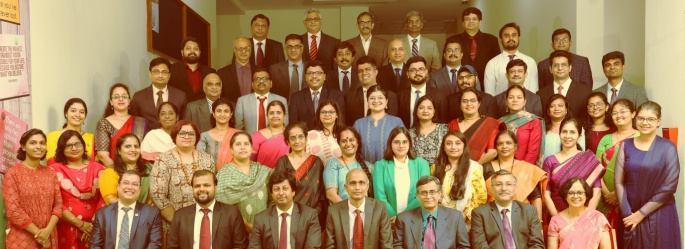We Need Banks Just For Long Term Credit
Publication– Outlook Money
Page view: 138,625
Author – Prof Meera L B Aranha
Now that the government is consolidating banks, they should also consider reviving DFIs to make banks remain viable. The last two decades saw successive governments giving a lot of impetus to infrastructural growth. Due to lack of other options, the funding for this largely came from banks. Infrastructure projects in India are infamous for cost overruns and delays. Such delays in implementation of projects, for whatever reasons, led to the ‘NPA overload’, making banks risk-averse towards lending to this sector. On September 7, 2020, The Business Standard had reported that “the Finance Ministry may soon set up a Development Finance Institution, as banks struggle to finance infra projects”. The Government had already come out with a pipeline of 6,749 projects that needed funding of over $1.7 trillion in 5 years, the article said. A couple of months before that, in July 2020, the RBI governor had asked India Inc. to find an alternate funding source for infrastructure lending, stressing that funding needs of $4.5 trillion as estimated by NITI Aayog for the infrastructure sector could not be achieved by banks alone. “The bad debt overhang had made banks risk-averse and quite limited in what kind of exposure they would want to take on their books. Banks are just recovering from the consequences of excessive exposure to infrastructure,” he had added.
Among other things, Budget 2021 had a couple of first time announcements like privatisation of two banks and setting up of a National Asset Reconstruction Company Ltd (a bad bank). These are no doubt bold initiatives. The bad bank will cleanse balance sheets of banks and make them attractive to private investors. But if these balance sheets have to remain attractive, the banks will have to watch their asset liability mismatches closely. One of the most critical reasons for the high level of NPAs in banks has been the huge exposures they had taken to stalled infrastructure projects, a mistake they cannot afford to repeat. Although the irrational exuberance of 2006-2008 may have led to risk-taking, and the policy paralysis of 2012-14 may have added to the already simmering NPA problem, the decision taken way back in the 1990s had created a ‘faulty’ bank business model, which entails accepting shorter-term liabilities to create longer-term assets. This has played a major role in creating the NPA mess. Such a business model cannot be viable in the long run. That’s why we need to look for other options, which the RBI governor was referring to.
Post-independence, as India embarked on an ambitious industrial development programme, a separate class of DFIs, (Development Financial Institutions) were promoted, owned and assisted by the government. The combined asset base of all the DFIs was Rs 1.58 lakh crore in 1998-99. These institutions were dedicated lenders to Indian industry. The DFIs also had access to low-cost funds from National Industrial Credit Long Term Operation Fund (LTO). This fund was created out of the profits of RBI, bonds of which were reckoned as SLR (statutory liquidity ratio) approved securities. These bonds had takers, as they helped banks maintain SLR, which was quite high in those days. As part of banking sector reforms initiated in 1991, the level of CRR, SLR and other preempted funds declined, and along with it, the appetite among banks for LTO bonds. With the window for cheap funds closing, DFIs found themselves raising money through short duration liabilities to create longer maturity assets. This asset liability mismatch was unsustainable, and the DFIs were forced to change their game. Several DFIs, specifically ICICI and IDBI, joined the universal bank bandwagon and reinvented themselves as retail banks with allied insurance operations.
After the demise of these DFIs, the scheduled commercial banks were asked to step in to fund long-term projects. If this model of funding long term assets with short term liabilities had failed for the DFIs, it was foolhardy to expect it to succeed for the scheduled commercial banks. The scheduled banks, at that time, predominantly dealt with retail and working capital loans, which had smaller moratorium periods and were usually against ready collaterals. Now they had to re-invent, to deal with project finance, which had longer gestation and break-even periods with neither the expertise nor balance sheet support. Further, as time progressed, the infrastructure sector in the country grew rapidly and with it the requirement of long-term funding from commercial banks. With growing NPAs and severe liquidity mismatches in banks, the flow choked as banks lost their appetite for long term credit.
The pandemic has exposed our creaking infrastructure. The next few years will see a lot of impetus being given to this sector and the infrastructure pipeline is sure to grow. A plausible solution of funding these projects without burdening the scheduled commercial banks is the need of the hour. Setting up one DFI will not solve the problem. Revival of the DFI concept and setting up more such institutions for granting only long term credit will make banks remain viable. Now that the government has decided to consolidate the banking industry with the merger of banks, can a few of these banks be converted into DFIs? We do need banks just for long term credit.
Link- https://outlookmoney.com/banking/we-need-banks-just-for-long-term-credit-7831




